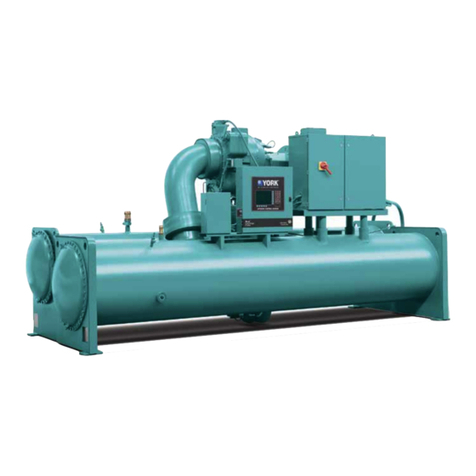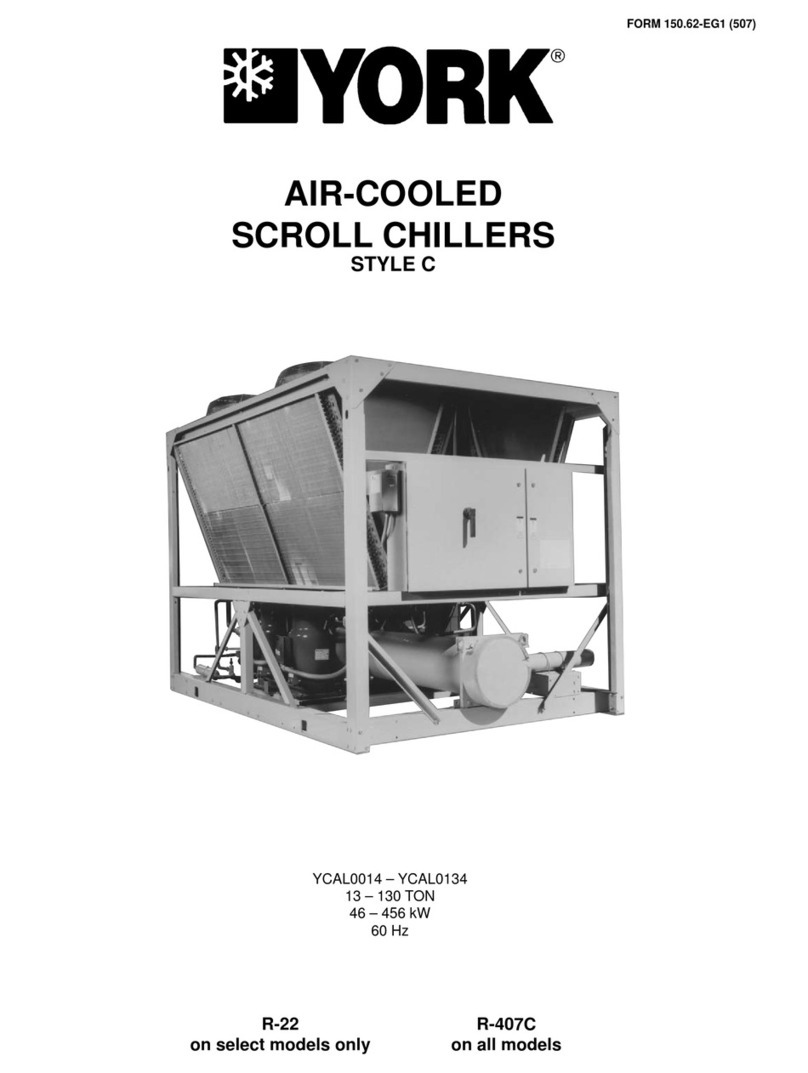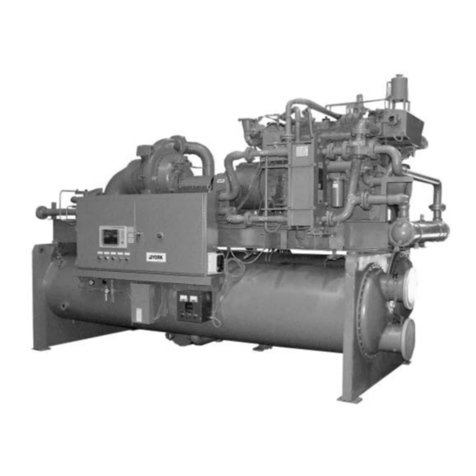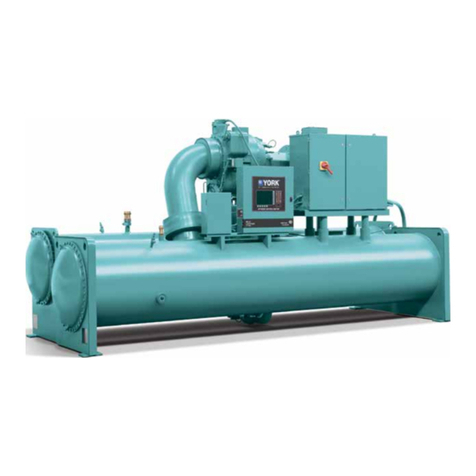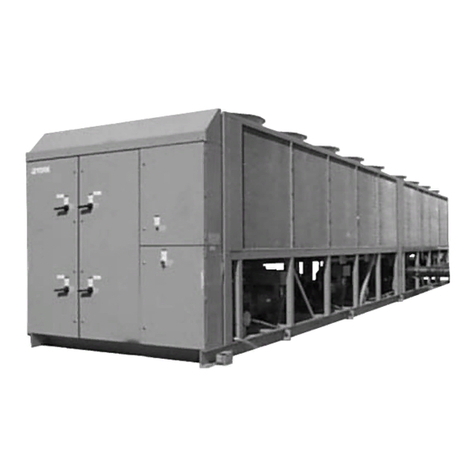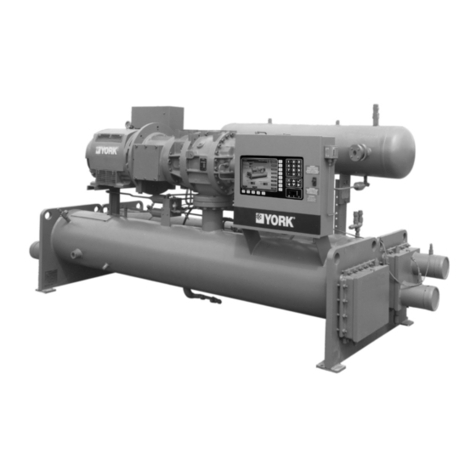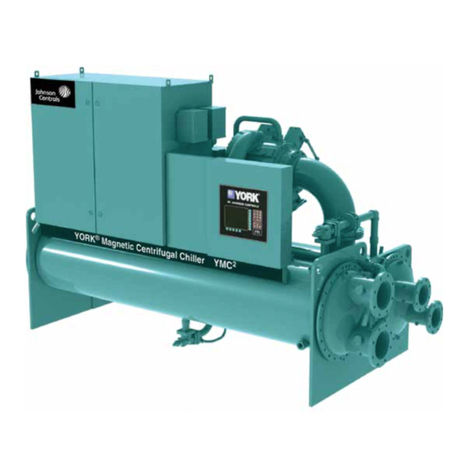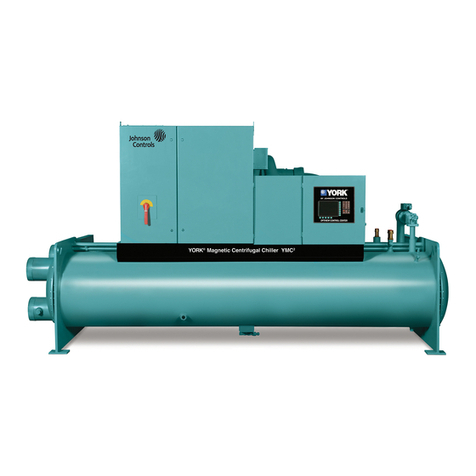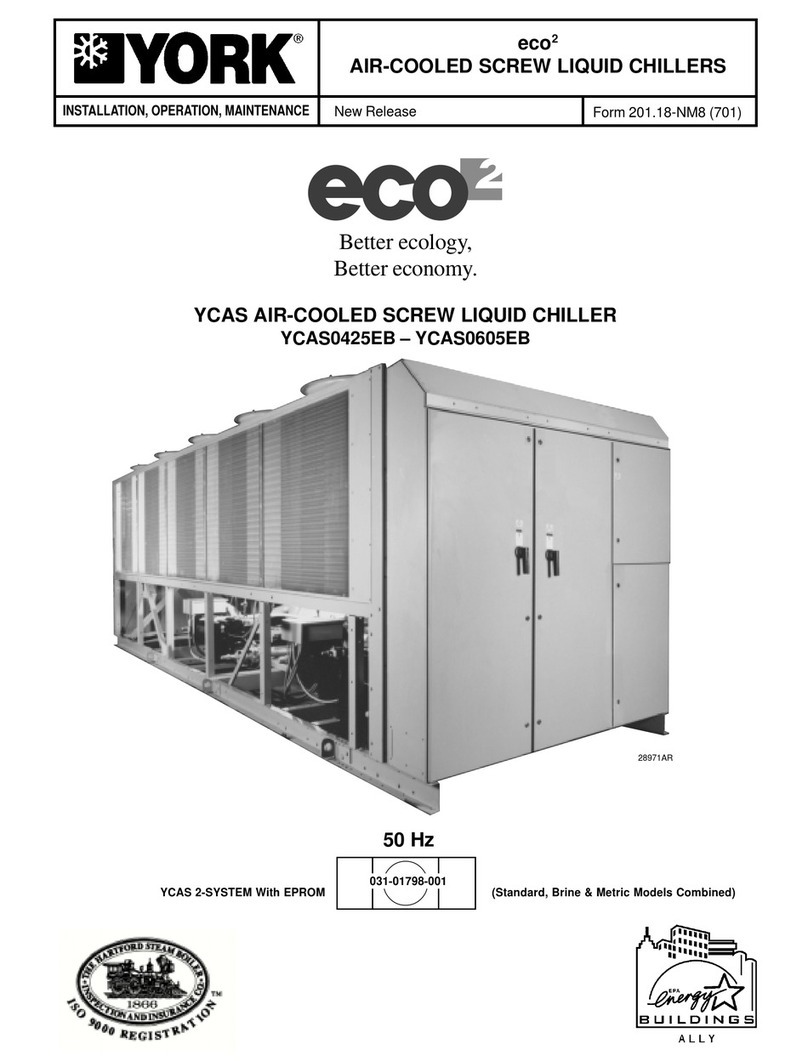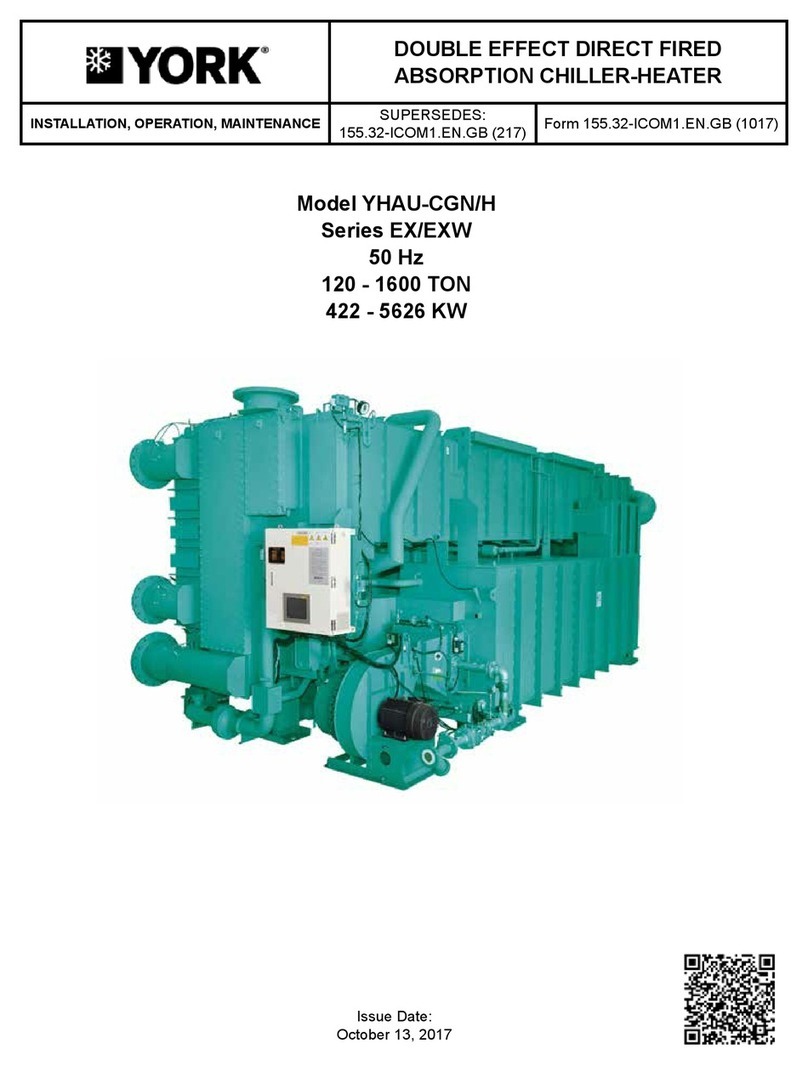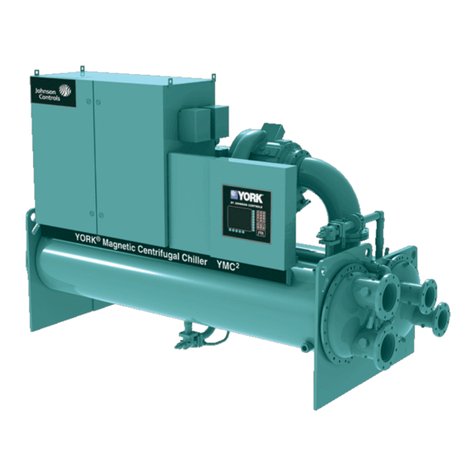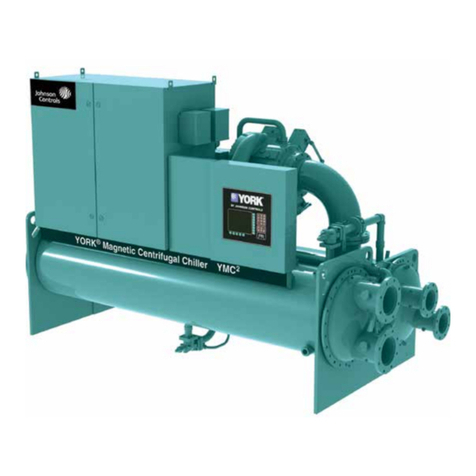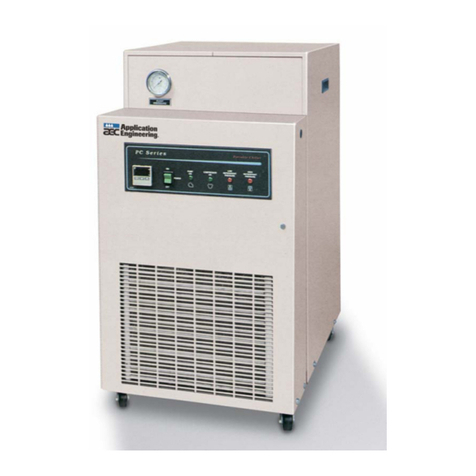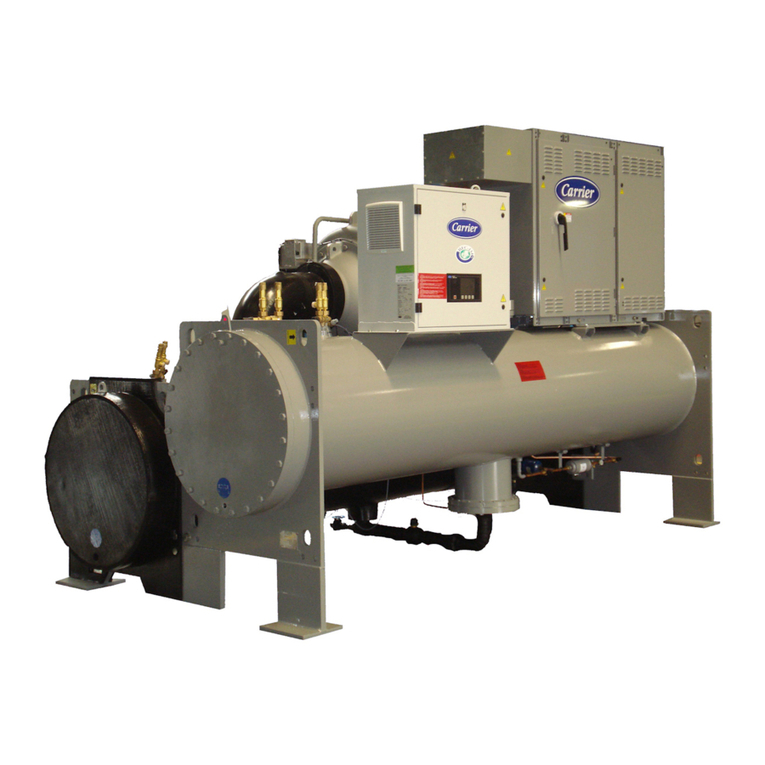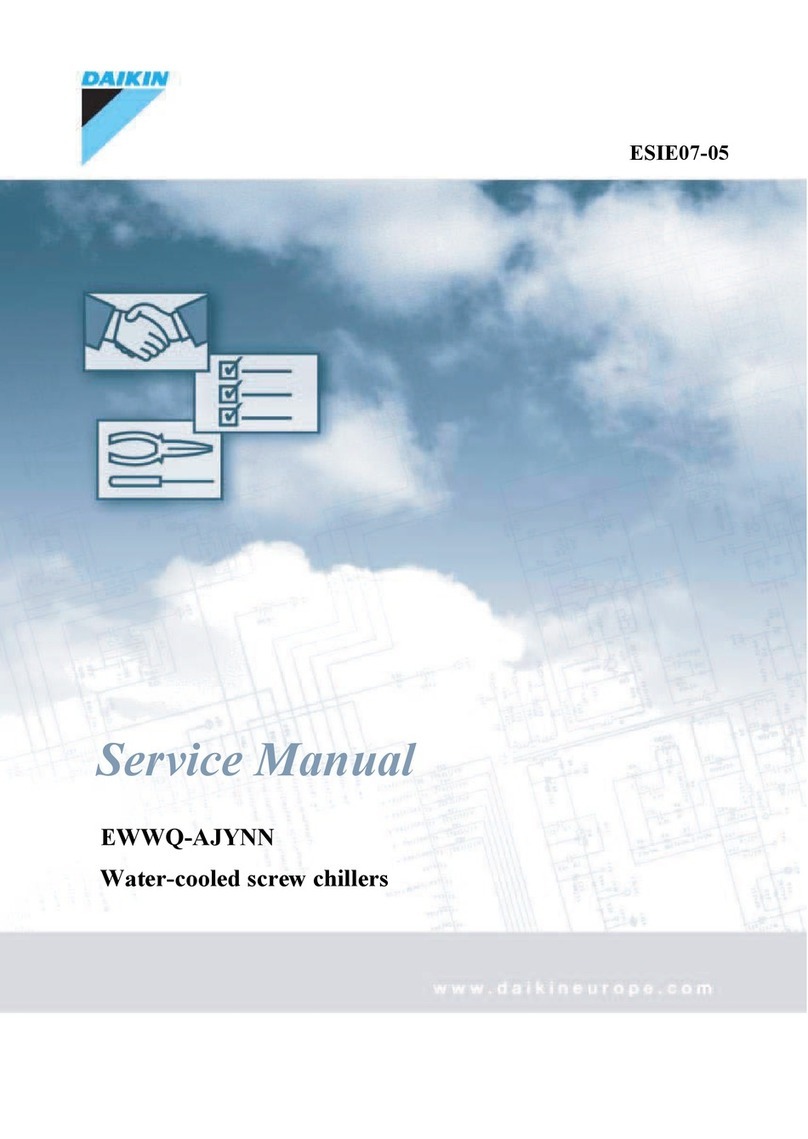
6JOHNSON CONTROLS
FORM 201.21-NM1 (1223)
TABLE OF CONTENTS (CONT’D)
Grounding.............................................................37
Water System ........................................................37
Flow Switch..........................................................37
Temperature Sensor(s)..........................................37
Programmed Options............................................38
Programmed Settings............................................38
Date & Time .........................................................38
Start / Stop ............................................................38
Setpoint & Remote Oset.....................................38
FIRST TIME STARTUP.........................................38
Interlocks ..............................................................38
Unit Switch...........................................................38
Start-Up ................................................................38
Oil Pressure...........................................................38
Refrigerant Flow...................................................39
Loading.................................................................39
Condensor & Fan Rotation...................................39
Suction Super Heat ...............................................39
Sub-Cooling..........................................................39
General Operation.................................................39
SECTION 6 - TECHNICAL DATA
WATER PRESSURE DROP CHARTS .................40
GLYCOL CORRECTION FACTORS ..................41
WATER TEMP. AND FLOWS...............................42
PHYSICAL DATA ..................................................44
OPERATING LIMITATIONS AND SOUND POWER
48
ELECTRICAL DATA.............................................49
ELECTRICAL NOTES ..........................................54
ELEMENTARY WIRING DIAGRAM.................56
CONNECTION DIAGRAM..................................60
LOCATION LABEL...............................................64
DIMENSIONS ........................................................66
TECHNICAL DATA (CLEARANCES)..............122
WEIGHT DIST. & ISOLATOR MOUNTING ...124
ISOLATOR MOUNTING POSITIONS..............125
SEISMIC ISOLATOR INSTALLATION ...........128
NEOPRENE ISOLATOR POSITION.................130
1" DEFLECTION ISOLATOR INSTALLATION131
REFRIGERANT FLOW DIAGRAM..................133
PROCESS & INSTRUMENTATION DIAGRAM
134
COMPONENT LOCATIONS..............................135
EQUIPMENT START-UP CHECK SHEET.......152
Unit Checks (NO power)....................................152
Panel Checks
(Power ON-both system switches OFF).............154
Programmed Values............................................155
Chilled Liquid Setpoint...........................................155
Date/Time, Daily Schedule, & Clock Jumper ....156
Initial Start-Up....................................................156
Check Subcooling & Superheat..........................156
Leak Checking....................................................157
CHILLER ELECTRONIC COMPONENTS......158
Keypad................................................................158
Display................................................................159
Chiller Control Board .........................................160
Relay Output Boards ..........................................161
VSD (Variable Speed Drive) ..............................161
AC to DC Rectier .............................................161
SCR Trigger Board .............................................162
DC Link Filter ....................................................162
1L Line Inductor .................................................163
AC to DC Inverter ..............................................163
Laminated Bus Structure ....................................163
VSD Logic Board ...............................................164
Control Panel to VSD Communications.............164
IBGT Gate Driver Boards...................................165
Current Transformers..........................................165
DV/DT Output Suppression Network ................166
Flash Tank Feed/Drain Valve Controller ............166
DC Bus Voltage Isolation Board.........................167
Chiller Circuit Breaker .......................................167
Autotransformer..................................................167
CHILLER CONFIGURATION JUMPERS........168
Number of Compressors Conguration Jumpers .
168
VSD LOGIC TO CHILLER MICROPROCESSOR
BOARD RS-485 COMMUNICATION
CONFIGURATION JUMPERS...........................168
MAX VSD FREQUENCY ...................................169
SECTION 7 - OPERATION
OPERATING CONTROLS..................................170
BASIC OPERATING SEQUENCE.....................172
NUMBER OF COMPRESSORS TO START.....173
General................................................................173
Standard IPLV.....................................................173
Optional Optimized IPLV...................................173
MINIMUM VSD COMPRESSOR
START/RUN FREQUENCY ...........................174
Minimum VSD Start Frequency.........................174
Minimum VSD Run Frequency..........................174
ACCELERATION/DECELERATION RATE
WHEN STARTING & STOPPING
COMPRESSORS ..................................................175
VSD Acceleration/ Deceleration Rates...............175
STANDARD IPLV CAPACITY CONTROL ....176
Fuzzy Logic Control...........................................177
Hot Water Starts..................................................178
Lag Compressor Operation in Load Limiting ....178
OPTIONAL IPLV CAPACITY CONTROL .......179
Fuzzy Logic ........................................................180
Hot Water Starts..................................................181
LOAD LIMITING CONTROL............................182
